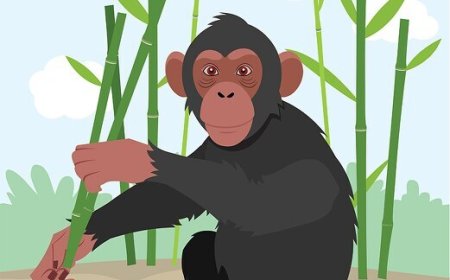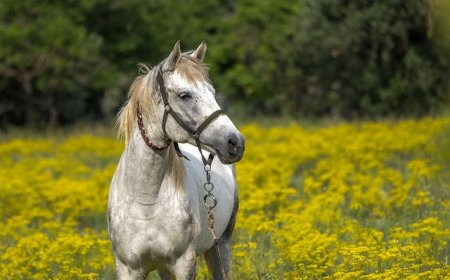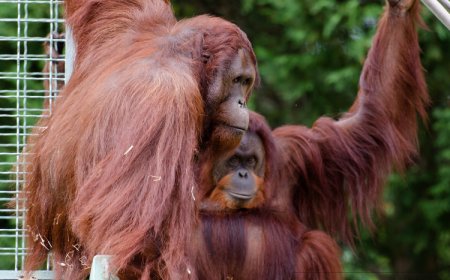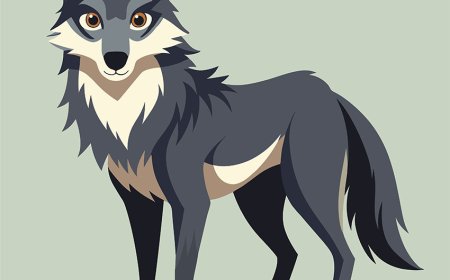All About Buffalo for Students: Powerful Grazers of Africa and Asia
Learn all about buffalo in this full-length educational article for students. Discover their habitats, behavior, types, and conservation. Includes vocabulary, quiz, and a kid-friendly summary!
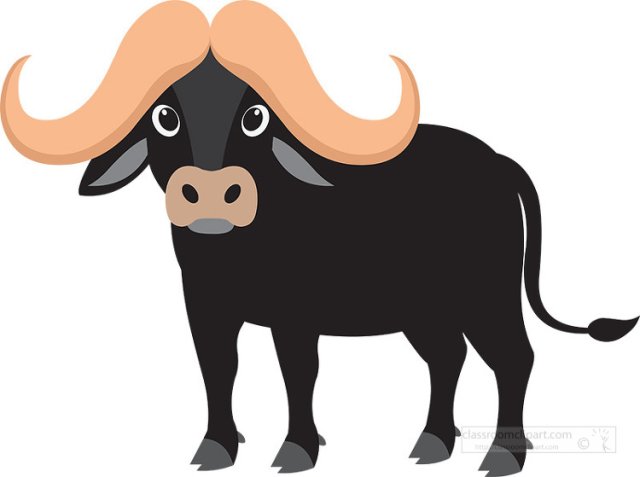
🐃 Buffalo: Powerful Grazers of Africa and Asia
Buffalo are large, strong mammals known for their sturdy bodies, thick horns, and social herds. They belong to the Bovidae family, which also includes cows, antelope, and goats. There are two main types of wild buffalo: the African buffalo, found in savannas and forests across sub-Saharan Africa, and the water buffalo, native to Asia.
Both types of buffalo are famous for their strength, group living, and toughness. Whether crossing rivers, charging predators, or grazing under the hot sun, buffalo play a major role in the ecosystems they live in—and in the cultures of the people who share their land.
🌍 Habitat and Geographic Range
Buffalo are well adapted to many different environments.
African buffalo (Syncerus caffer):
- Found in sub-Saharan Africa, especially in grasslands, savannas, forests, and wetlands
- Prefer areas with plenty of water, since they drink daily
- Live in countries like Kenya, Tanzania, Botswana, South Africa, and Uganda
Water buffalo (Bubalus bubalis):
- Native to India, Nepal, China, and Southeast Asia
- Thrive in wetlands, swamps, rice fields, and river valleys
- Domesticated water buffalo are used for farming, milk, and transport
- Wild water buffalo (endangered) are mostly found in India and Nepal
Both types rely on access to water and plant life, and their ranges often overlap with human farming regions. They are highly dependent on seasonal changes, moving with the rains to find fresh grasses and mud.
🌿 Diet and Feeding Habits
Buffalo are herbivores, which means they eat only plants. Their diet includes:
- Grasses and reeds
- Aquatic plants and soft shrubs
- Leaves and bark (especially during dry seasons)
As grazers, buffalo spend most of the day eating. African buffalo feed mainly on grasses, while water buffalo will often wade into wetlands and marshes to find food. Their strong molar teeth and four-part stomachs allow them to break down tough vegetation and extract nutrients efficiently.
Buffalo play an important role in nature by keeping grasses short, which helps prevent wildfires and supports other species. Their dung also fertilizes the soil, and their wallowing creates mud pools that are used by many animals.
👥 Social Behavior and Herd Life
Buffalo are highly social animals and live in groups called herds. These herds provide safety and allow for cooperation in finding food and avoiding predators.
African buffalo herds:
- Can include hundreds of individuals
- Made up of females, calves, and a few dominant males
- Males may also form “bachelor groups” or live alone
- Strong bonds form between herd members, who defend each other from lions and hyenas
Water buffalo herds:
- Usually smaller and more loosely organized
- Include females and calves, with bulls joining during mating season
- Domesticated herds are often led or guided by humans
Buffalo communicate through:
- Grunts, bellows, and snorts
- Tail and body movements
- Rubbing horns and scent-marking
If threatened, buffalo will form a circle around their young, facing outward with horns ready. In Africa, they are one of the few animals that actively fight back against lions, sometimes even chasing predators away or rescuing captured calves.
🦴 Physical Features and Adaptations
Buffalo are built for strength and endurance.
Key features include:
- Thick, curved horns used for defense and fighting
- Heavy, muscular bodies, weighing between 1,000–2,000 pounds
- Strong hooves for traveling across muddy or rocky terrain
- Tough hide that protects them from bites, thorns, and insect stings
- A love of mud and water, which helps them stay cool and avoid parasites
African buffalo have dark gray or black coats, while water buffalo may be dark or lighter with a bald nose. Domesticated water buffalo have been bred to be gentler and easier to handle, while wild ones are more aggressive and wary of humans.
Their horns vary by species:
- African buffalo: broad, fused horn bases known as a “boss”
- Water buffalo: wide, crescent-shaped horns that curve outward
🍼 Life Cycle and Reproduction
Buffalo breed seasonally, often timed with wet seasons, when food and water are easier to find.
- Pregnancy lasts 10–11 months
- A single calf is usually born
- Calves can stand and walk within an hour of birth
- Young are nursed for 6–9 months, though they begin grazing earlier
- Calves stay close to their mothers and learn herd behavior early
Buffalo reach adulthood at about 3–5 years old, and can live up to 20–25 years in the wild, sometimes longer in captivity. Adult males compete for mates using horn clashes, where they lower their heads and slam together to test strength.
Mother buffalo are extremely protective and will stay with their young at all times during early life.
⚠️ Threats and Conservation
While buffalo are not currently endangered as a group, some species are at serious risk.
🛑 Major threats:
- Habitat loss from farming, logging, and human expansion
- Hunting and poaching, especially for meat or horns
- Disease transmission from domestic animals
- Conflict with farmers over grazing lands
- Inbreeding and small populations in wild water buffalo
🛡️ Conservation efforts:
- Protected areas like national parks and wildlife reserves
- Anti-poaching patrols and local education programs
- Support for eco-tourism, where communities benefit from healthy buffalo populations
- Breeding programs and genetic research to protect wild water buffalo
The wild water buffalo is now critically endangered, with fewer than 4,000 individuals left in the wild. African buffalo remain more stable but need large, connected habitats to thrive.
🎉 Fun Facts About Buffalo
- African buffalo are called “Black Death” in parts of Africa due to their strength and unpredictability
- Water buffalo are used to plow rice fields in Asia—they’re nicknamed “the living tractor”
- Buffalo can run up to 35 mph (56 km/h) over short distances
- Herds have been known to rescue calves from lions
- In some cultures, buffalo horns are symbols of power and courage
🧠 Vocabulary List
- Herbivore – An animal that eats only plants
- Herd – A group of animals living together
- Grazer – An animal that feeds on grass
- Wetland – A swampy area filled with water and plants
- Poaching – Illegal hunting or capturing of animals
- Predator – An animal that hunts others for food
- Domesticated – Tamed and used by humans
- Calf – A baby buffalo or cow
- Territory – An area defended by an animal or group
- Boss – The thick horn shield on the forehead of an African buffalo


















































